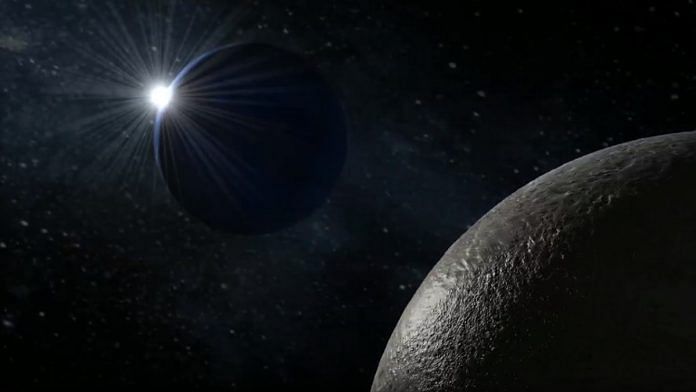New Delhi: A team of scientists from the University of Cambridge, who used NASA’s James Webb telescope to study an exoplanet called TOI-270 d, claim to have found that the planet outside our Solar System has an atmosphere with water vapour, methane, and carbon dioxide.
Given the composition of these gases, they suggest that the planet is a ‘waterworld with a boiling ocean’. The planet’s atmosphere would be rich in hydrogen, they suggested.
TOI-270 d is double the size of Earth, and while the James Webb telescope was used to make this observation, there exist other theories about the planet too.
Some Canadian scientists have in the past argued that the planet is too hot for liquid water and that it has a rocky surface and an atmosphere with hydrogen and water vapour. Read more
Also Read: A chilling trend — anchors for Antarctic ice shelves reducing fast, leading to more ice melting
How bumblebees learn complicated tasks
Researchers from the UK have discovered that bumblebees can learn how to solve a complex two-step puzzle by watching another bee do it, even though they can’t figure it out on their own.
The study, published in Nature journal Wednesday, explores the role of culture and social behaviour in animal cognition and reveals a new area of research in animal learning.
The experiment involved training bumblebees to open a box using a difficult two-step method.
When the bees were tested individually, they failed to open the box. However, when they observed a trained bee perform the task, they quickly picked up the skill and could do it themselves.
The study shows that social learning is not limited to humans and other vertebrates, but can also be found in non-human invertebrates. Read more
A new epoch in Earth’s history
A group of 12 scientists from the International Subcommission on Quaternary Stratigraphy (SQS) Tuesday decided the fate of a controversial proposal which sought to declare a new epoch in Earth’s history, called the Anthropocene.
The term, which has been circulating for more than 15 years, refers to the era when human activities have significantly altered the planet’s climate and ecosystems.
However, the majority of the SQS members, eight of the 12, voted against the proposal, which would have marked the end of the current Holocene epoch — the 11,700 years of stable global environment in which the whole of human civilisation developed — and the start of the Anthropocene from 1952.
The year 1952 is chosen because it is the year when scientists found residues of plutonium from hydrogen bomb tests in the sediments of Crawford Lake in Canada.
The lake is chosen because it is a meromictic lake with an undisturbed bottom layer of water, that accumulates sediments every year recording the change in Earth’s climate over centuries, almost like the rings of a tree record its age. Read more
Also Read: The things they do for sex? These Aussie marsupials give up sleep in mating season & end up dead
Marine animals & climate change
Using fossil records of marine animals, researchers from the University of Oxford investigated the factors that cause animal extinctions due to climate change.
Fossil records reveal how past climate change, mainly natural events, affected the survival of some species.
Researchers used this data to identify which current animal species are at risk of extinction from human-induced climate change.
They discovered that animals that live in extreme environments, such as the Arctic, or that have narrow temperature tolerances, are more prone to extinction.
On the other hand, animals that are smaller in size and have wider geographical ranges have better survival prospects.
The study appeared in Science journal on 7 March. Read more
(Edited by Richa Mishra)
Also Read: Ancient mangrove forest discovered on Panama island, preserved by a volcano for 22 million years



